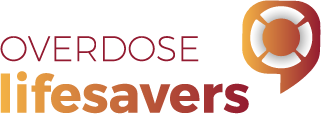So, […] I was walking around [name of an inner Melbourne suburb] doing a general check on people, asking people if they need any equipment while I’m around. It was a Thursday morning and [name of a primary health service] doesn’t open until 1pm. It was about 11:30am [when I] came across a friend of mine who was lying down in the middle of the mall. Normally she doesn’t lie down in the middle of the mall. [I] started to approach her and people are going, ‘She’s just dropped, she’s just dropped, we don’t know what to do.’ And I’m like, ‘Okay, she’s just dropped. Do you know what she’s had?’
‘Yeah, she’s had alcohol, she’s had pills, we don’t know what pills.’
‘Has she had any heroin?’
‘Yeah, she’s had about a gram in the last 24 hours.’
‘Okay, she’s potentially overdosing. I need you to call an ambulance. I’m going to start preparing naloxone to give it.’
‘Don’t give her naloxone – she won’t like it.’
‘No, I promise I’m going to be better than the ambulance at this. I know what I’m doing. Just trust me, have faith in me.’
‘All right, but if she comes around and she clocks you one, don’t say we didn’t tell you so.’
So, [using] the gently-gently approach, [I] gave the first shot, and while I was giving the shot, I noticed that her lips are starting to turn blue. So [I] gave the first shot, put her in the recovery position, checked her airways were clear, turned her back on her back and started breathing for her. Two minutes later, [I] still had no response, [so I] gave her a second naloxone shot. Her lips were no longer blue. It looked like she was starting to breathe on her own, so I just observed the situation. She still wasn’t awake after four minutes, so I gave a third naloxone shot [and] by that time the ambulance had arrived.


